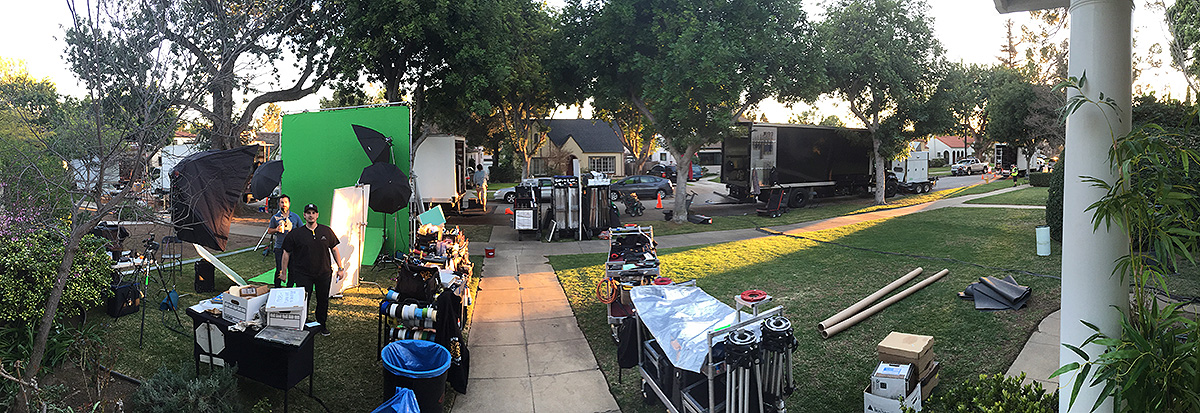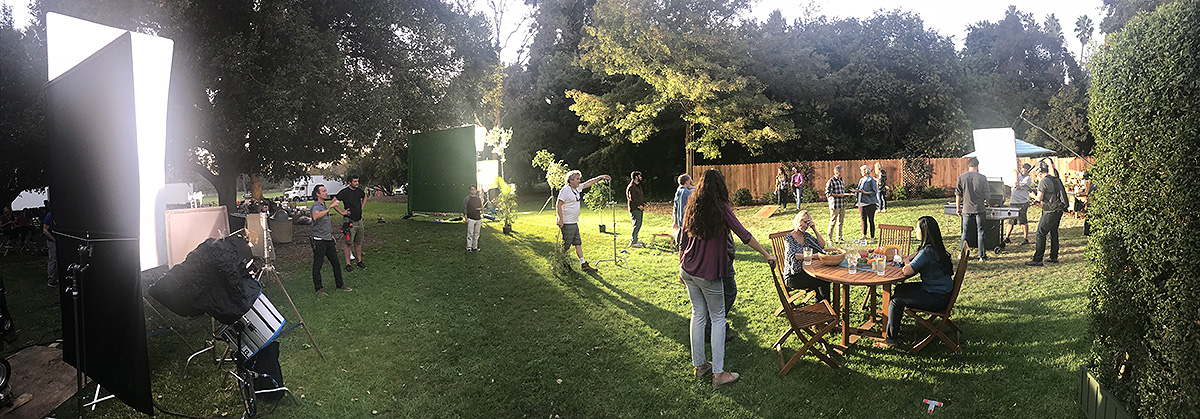Photo and video are two of the most effective ways to market your business. Consumers are visual and remember what they see more easily than what they read or hear. If you’re a business owner considering investing in photography or videography, you probably wonder which format is most effective.
In this article, I’ll compare photo vs. video and break down the pros and cons of each. Continue reading to learn how a photo shoot operates, how a video shoot works, and the difference between video and stills.
Photography
A commercial photography shoot is the best way to get a diverse library of professional images to use across all of your marketing initiatives. In the following sections, I’ll provide a high-level overview of a photoshoot and the preparation that goes into one.
Initial Contact
After conducting thorough research to find the right corporate photographer, the client typically reaches out via email, phone or contact form to kickstart an engagement. Photographers may cold call if they find a client that fits their style, but that’s less common.
Align On Client Logistics
Once the photographer and client are in contact, they’ll set up an initial meeting via phone or video call to align on logistics. Some clients may schedule a call with the photographer before hiring them, though in-depth logistics typically aren’t discussed until after the client hires the photographer.
In this meeting, the client expresses their needs and provides an overview of what they want to get out of the engagement. The client and photographer also align on a budget, the number of assets to be delivered, location details, shot list, and any other information they deem essential to the success of the project.
Hire A Crew
With a plan in place, the photographer understands who and what they need in order to prepare for the shoot. Based on the client’s needs, the photographer puts together a team of in-house staff or hires a crew of freelance contracted employees.
Budget plays a major role in what kind of staff photographers can hire. There are several expenses they needs to account for, including hourly rate, insurance costs and travel (if it’s applicable).
Professional photographers often handle smaller corporate photoshoots without hiring a crew or limiting additional staff to a second shooter.

Get The Necessary Equipment
A professional commercial photographer likely owns plenty of gear – several camera bodies, a selection of lenses, and a robust mix of accessories. Depending on the shoot they may need more equipment than what’s in their arsenal.
Lighting gear, additional tripods and other larger, more expensive accessories are often rented for the duration of the shoot.
Props and Talent
Along with crew and equipment, the photographer and client work together to acquire any props or talent necessary to meet the client’s needs. To make your shoot as authentic as possible, I recommend using the actual people behind your company as talent. However, larger shoots and other circumstances may require outside talent.
Location Scouting
No matter where the shoot will take place, the photographer will travel to the location ahead of time to plan equipment placement, scout natural lighting sources and pinpoint what areas are most photogenic. This ensures they’re prepared on the day of the shoot and capture every image necessary to make the project a success.
If the shoot is set to take place off of the company’s campus, the photographer and client must work together to find the right location.
Scheduling
If the commercial photo shoot is happening in the office, the photographer and client have to schedule around day-to-day operations. The last thing either party wants is for the photo shoot to interrupt business.
Scheduling also applies to hired talent – coordinating travel, creating an itinerary for the shoot, and any other types of scheduling.
Photo Shoot
When the day arrives, the photo shoot should operate smoothly if you’ve effectively prepared. Each member of the crew completes their respective roles, starting with any makeup and wardrobe.
Lighting rigs and other stationary objects like tripods can be set up ahead of time. If the shoot is slated to have different settings throughout the office, lighting and tripods will likely be moved at each stage.
Once the shoot wraps, it’s essential for the photographer to back up all of the images.
Editing
The final step in a corporate photo shoot is editing images. Depending on the photographer’s style, editing can range from lighting adjustments to creative enhancements.
Once editing is completed, the photographer sends the final image files to the client for review. Casey Templeton Photography delivers images on the day of the shoot.

Videography
Between Tik Tok, Instagram and Facebook reels, YouTube and other social media platforms, video has quickly become the most prominent form of visual marketing. But when it comes to commercial video production, there’s more than whipping out your iPhone and pressing record.
In the sections below, I’ll break down all of the components that go into a video shoot for your business.
Initial Contact
Similar to photography, a videography project kicks off with the initial contact from the client via phone, email or contact form. In this phase, the key stakeholders on the video team – typically a videographer, cinematographer and/or director – meet with the client to assess their needs.
Along with the client’s needs, the team discusses components of the project like budget, timeline, and other important information.
Brainstorming Video Ideas
Once the video team understands the client’s needs, they head to the drawing board. The process begins with a brainstorming session to come up with ideas for content. Once the main idea is established, there are several phases of drafting before the vision becomes a reality.
Some of the phases include:
- Writing a treatment
- Drafting the script
- Storyboarding
Compiling a Crew
While photo projects may require additional crew, video production usually requires a larger crew because there are so many moving parts. Some roles that need to be filled include:
- Producer
- Art director
- Props/set management
- Lighting director
- Gaffer
- Electricians
- Wardrobe director and stylist
- Makeup and hair artists
- Production Coordinator
- Camera crew
- Grips

Consider Production Stills
If you’re investing in a video it’s beneficial to hire a photographer to capture production stills, which are still images captured during production. Production stills can be used in tandem with the final video in order to maximize the lifespan and profits of your advertising campaign.
Location Scouting
As with photo shoots, the production coordinator and any other members of the video team need to scout the location prior to the shoot. If the client wants the video to take place outside of company property, the production coordinator is in charge of finding ideal locations.
Again, even if the shoot takes place on the company campus it’s necessary to scout the location. This ensures the video team is prepared and the best areas of each location are identified for best results.
Casting
If you’re working on a small project or a corporation that wants to use its people for an authentic video, then the casting process won’t be very extensive. However, video projects are more likely to have outside talent.
Casting is a collaborative effort between the video team and the client to ensure that the best actors are selected for the project.
Pre Shoot
Video projects require a little more effort when it comes to pre-shoot preparation. Prior to the shoot, the crew sets up all of the equipment. This includes setting up lighting, staging cameras, preparing the makeup and wardrobe, and any other tasks specific to the project.
Video Shoot
With everything set in place, the video shoot is underway. All of the cast and crew members work together to capture footage that will be used to cut the final video.
It’s essential that the video crew capture more than enough footage to work with in post-production. If you’re investing in a video project, you want to get the most out of your shoot so prepare for a long day (or days) than you may expect.
Post-Production
The final step in a video project is post-production. When it comes to video, post-production is usually a more intensive process than photography. There are more components to consider and different options to stylize and create a memorable video project.
Where photography – specifically commercial photography – has minimal edits, video projects have several steps in post-production.
- First, editors need to review all of the footage and select the best shots
- Then they edit the footage for timing, strategic cuts and any sound editing
- After the actual footage is edited and the initial cut is finished, there is the option to add special effects to further enhance the video
- Finally, the editor adds additional graphics to bring the video production to its final form

Main Differences Between Photo and Video Shoots
Now you know how photography and video shoots operate. You probably already recognize some of the differences between the two, but in the sections below I’ll highlight the key components that make video productions unique from photography shoots.
Different Types of Crew Members
Both video and photography may require crew members, but the exact roles differ depending on the project.
- For photography, smaller shoots can be completed with one person who handles everything from location scouting to lighting and working the camera.
- In videography, even smaller projects require a larger crew. The essentials including makeup and wardrobe, lighting, editing and other tasks are quite difficult for one or even two people to handle.
Video Has More Permit Requirements
While some photography shoots will require permission, it’s easier to set up and shoot on location with few hiccups. Video projects often require more setup and numerous locations. Because it takes longer to set up and break down, video productions often need to acquire different types of permits in order for the shoot to go smoothly.
Videography Enables More Creative Decisions
Both videography and photography require a creative eye to capture emotion visually. Photography is a stationary image, so the creative elements are limited to framing, composition, lighting, color and position. Videography adds additional creative elements like motion, stabilization, special effects, animation and more.
Post-Production Is A Longer Process In Videography
As I mentioned before, videography typically has a more extensive post-production process. Similar to creative decisions, post-production in photography is often limited to cropping, color and smaller edits. Videography has many components to consider, including strategic cuts, special effects, graphics, audio and more.
Work With Casey Templeton For Production Stills
I hope you now have a better understanding of what separates photo vs. video, and the components that make each unique. If you’re considering video production for your business, you can maximize the return on your investment by combining video and stills.
As I previously discussed, a unit stills photographer roams the set of a video production capturing high-quality still images. These images are used in tandem with the video to create a robust, effective advertising campaign.
Casey Templeton is a professional on-set stills photographer with years of experience in various industries. To learn more about production stills or to kickstart an engagement, fill out our contact form.
